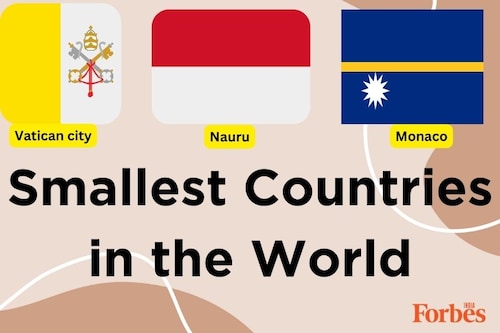Top 10 smallest countries in the world
Explore the top 10 smallest countries in the world. Learn about the small wonders, each with its own unique story to tell
By Forbes India
Last Updated: Aug 26, 2024, 09:29 IST1 min


Ever wonder about the tiniest countries that dot our world map? They may be small in size, but they are important in their own right. From charming city-states to remote island nations, these pint-sized places have a lot to offer—like the Republic of Palau. Join us as we take a closer look at the top 10 smallest countries in the world.
First Published: Aug 26, 2024, 09:29
Subscribe Now